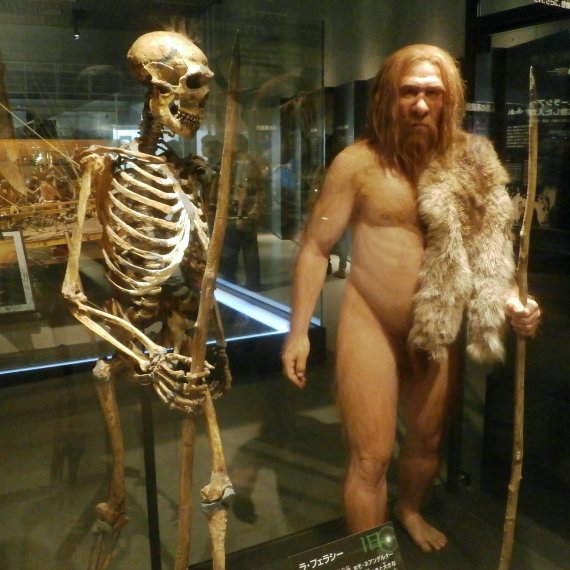A Neanderthal skeleton and -reconstruction. (photo: credit)
Sex with a Neanderthal? Our ancestors did don’t seem to have had any qualms about it. Modern humans and Neanderthals cohabited the earth for about 50,000 years. About three to seven percent of our genome comes from Neanderthals, researchers from Wageningen University and their Edinburgh University colleagues conclude in the journal Genetics.
Their DNA study puts an end to a long-running scientific debate on the explanation for the genetic connection between the two species. One earlier theory sought the answer in a common African ancestor. This scenario seems now to be definitively ruled out, although it has been established that both humans and Neanderthals originated from Africa. But Neanderthals left the African continent about 300,000 years ago, and humans ‘only’100,000 years ago. ‘We have demonstrated that the genetic similarities between humans and Neanderthals must have come about outside Africa through sexual contact between them in Europe and Asia,’ says Laurent Frantz of the Animal Breeding and Genomics Group at Wageningen University. There would not have been anything very romantic about it, he reckons. ‘It was probably a question of pillage and rape, but there may also have been friendly contact.’
The genetic similarities between humans and Neanderthals must have come about outside Africa through sexual contact between them in Europe and Asia
Laurent Frantz
Whatever the case, the findings do change our view of human evolution, says Frantz. ‘Anthropologists used to believe that modern humans must have quickly wiped out the more primitive hominids when they left Africa, because they were more efficient. But now we know that the Neanderthal lives on in us.’
The researchers developed a new method of analyzing the links between humans and Neanderthals. They used DNA material from a European, an Asian and a Neanderthal, and divided the genetic code into a whole series of little blocks, calculating the ancestry of each block. They then calculated the probability of both ancestry scenarios. It transpired from this genetic analysis (the Maximum Likelihood Analysis) that the scenario in which the two species left Africa separately, met later in Eurasia and had sex, was by far the most probable. The method used by Frantz was originally developed for studying genetic variation in Asian pig breeds. Next autumn he hopes to graduate with a PhD from Wageningen for his research on the evolution and domestication of the pig.

